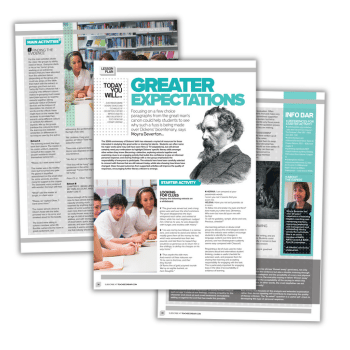Focus on a few choice paragraphs from Charles Dickens’ canon in this KS4 textual analysis lesson plan…
Students can often name Dickens’ major works (and may well have seen films or TV adaptations). However, they’ll almost certainly need your enthusiasm to highlight Dickens’ specific literary skills amongst other writers they know.
Becoming a detective, exploring extracts together and examining clues is an engaging activity. It builds the confidence to give an informed personal response.
Sharing findings with a new group emphasises the responsibility of everyone to participate. The extracts here have been carefully selected to connect with themes that are still relevant today, whilst also showing how times have changed.
Clear, focused outcomes from supported activities will improve the quality of responses, encouraging further literary criticism to emerge.
Textual analysis learning objectives
- Scrutinise/examine Dickens’ devices and techniques of description
- Further improve analysis and evaluation of texts from our literary heritage
Starter activity
Display the included extracts on a whiteboard. Use learning partners or devise small groups to discuss the chronological order in which the extracts were written.
Eencourage students to identify the changes in language, evident over time (and in the process, see how Shakespeare suddenly seems easy compared with Chaucer!).
Pinpointing a list of clues used to make decisions about text externalises student thinking, creates a useful checklist for extension work, and prepares them for sharing their learning and accepting responsibility for engaging with the task.
This is particularly important for engaging boys in the idea of accountability or evidence of learning.
Moyra Beverton has over 25 years’ experience of teaching English, coaching and mentoring teachers, improving leadership and management and embedding literacy across the curriculum. She is an active member of NATE, NATE Council & NATE Post-16 committee.














